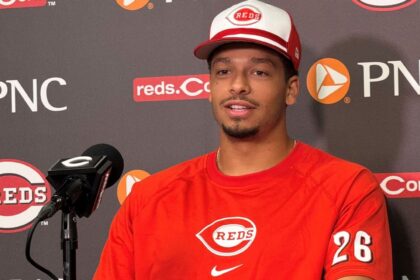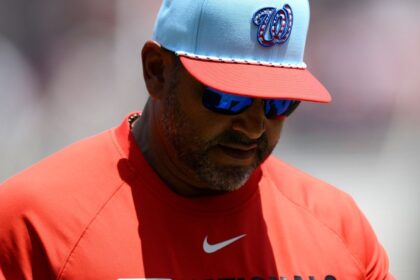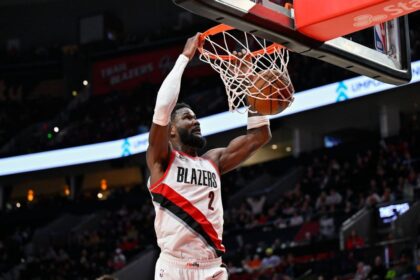MLB Free Agency: Analysis and Grades of the First Signings
The MLB 2025-26 movement season has begun! Here’s the analysis and ratings of the most important signings and trades this winter. From big contracts that could change the course of your team to shocking trades, we’ll keep you informed of everything that means for the next season and beyond. Our experts will evaluate each move as it happens. Keep reading for the latest analysis! We will update this story constantly.Free Agent Tracker | Top 50 Free Agents | Fantasy Analysis
Blue Jays Take the Lead with Cease
The Blue Jays make the first big move on the mound with the signing of Dylan Cease. The agreement: seven years, $210 million Rating: B An interesting aspect of MLB free agency is that the number of teams interested in a player doesn’t always directly correlate with their value on the field. After all, there are only a limited number of teams willing and able to spend nine-figure sums. In recent years, we’ve seen excellent players like Pete Alonso, Matt Chapman, and Blake Snell settle for short-term deals at the end of the offseason, waiting for that big long-term offer that never came, or that was taken off the table. In the case of Dylan Cease, it makes a lot of sense for him to sign early while the money is available. He’s a pitcher with clear skills and abilities, but also with frustratingly inconsistent results, which was going to lead to a wide variation in how teams evaluated him, and therefore, what offers he would receive. The $210 million deal that the Toronto Blue Jays gave Cease is closer to the high end for him, given Kiley McDaniel’s projection of five years and $145 million.The Positive:
Pure Quality: The “Stuff+” metric (which several sites calculate based on a large number of factors such as spin, movement, and velocity) rates Cease’s pitches as some of the best in the majors, including a fastball that averages 97 mph. Among pitchers with at least 100 innings in 2025, he tied for 12th in Stuff+ according to FanGraphs.
Durability: Cease has accumulated five consecutive seasons with at least 32 starts. Since 2021, he is first in the majors in games started and seventh in innings pitched. Considering that the best predictor of future injuries is past injuries, that health record and projected durability give him a high margin for any future agreement.Age: Entering his 30s, clearly still in his peak years.The Negative:
His earned run average (ERA) has increased from 2.20 to 4.58 to 3.47 to 4.55 in the last four seasons, with corresponding changes in his value, from 6.4 WAR in 2022 with the Chicago White Sox to only 1.1 with the San Diego Padres in 2025, when he had a high ERA despite pitching in a good park for pitchers. His ERA on the road in 2025 was 5.58, which is certainly concerning, as he is now going to a division with better hitting and a hitter-friendly park.His lack of efficiency not only leads to too many walks (he leads the most in the last four seasons), but also to short outings due to high pitch counts. Cease failed to last five innings in 10 of his 32 starts, which is too often for a pitcher who just got $210 million.
In Cease’s best season, in 2022, his slider was untouchable, while his four-seam fastball and knuckle curve were also effective, making him a three-pitch pitcher. The curve hasn’t been as effective since then, with hitters batting .576 against it in 2025, .444 in 2024, and .538 in 2023, making him now a two-pitch pitcher. He began to throw a sweeper and a sinker a bit more often last season, and perhaps the continued development of those pitches will help him return to being one of the best starters in the majors. In the best-case scenario, the Blue Jays get a solid starter to complement Kevin Gausman, Trey Yesavage, Shane Bieber, and Jose Berrios. The best version of Cease is a number 2 starter who sometimes looks like an ace. If Bieber is healthy all season and Berrios’ elbow inflammation at the end of the season was only temporary, that’s a rotation that could be as good as any in the game. We knew the Jays were going to make a big move this offseason. This might not be their only major move.Red Sox Bolster Rotation in Trade with St. Louis
The Red Sox receive:- Right-handed pitcher Sonny Gray
- $20 million in cash
- Left-handed pitcher Brandon Clarke
- Right-handed pitcher Richard Fitts
Can that be fixed? With a fastball averaging 92 mph, maybe not. Gray threw his three fastball variants 53% of the time, so maybe the Red Sox will suggest a different pitch mix: the four-seam fastball, while giving him the only pitch Gray throws in the zone, has been punished for two years in a row, but it was still the pitch he threw most often in 2025.
In general, Gray covers a big hole without the Red Sox paying a long-term contract, and the Red Sox didn’t give up anyone projected to be an impact player for them in 2026 (like starters Payton Tolle and Connelly Early, who debuted last season and could be in the rotation in 2026). Cardinals’ Rating: C It’s not exactly a salary dump, but it feels like one, although the Cardinals at least contributed $20 million to get a little better performance from the player. Fitts could be a back-end rotation player and, given the holes in the St. Louis rotation, he’s almost certain to get that opportunity. His four-seam fastball, which sits at 95-96, was an effective pitch in the 10 starts he made for the Red Sox in 2025, but he hasn’t really developed a reliable secondary offering. His slider was hit hard and didn’t generate enough swings and misses. Maybe his sweeper/curve combination will eventually elevate his game, but he threw both less than 11% of the time. Clarke, a left-handed pitcher who has reached 100 mph, was drafted from a Florida community college in 2024. He underwent Tommy John surgery in high school and took a redshirt year in Alabama with another injury. The Red Sox limited him to 14 starts and 38 innings in 2025 in Class A, where he recorded high strikeout numbers (60) and high walk totals (27). ESPN’s Kiley McDaniel ranked him as the number 9 prospect in the Boston system in August and, while there is a clear upside if everything goes well, he is not close to the majors and the profile screams reliever risk. For the Cardinals, at least they have made their intentions clear: if 2025 was a “reset”, 2026 is going to be a rebuild. Nolan Arenado, Brendan Donovan, and Willson Contreras could also be traded before the winter ends.Rangers and Mets Swap Veterans
The Mets receive:- Second base Marcus Semien
- Gardener Brandon Nimmo
If you ignore positional adjustments, Nimmo is a better hitter than Semien and should be a considerable upgrade for Texas in the outfield compared to what the Rangers had been getting from Adolis García, recently non-tendered. He is not as good a defender as García, especially in terms of arm strength and, in fact, is more likely to play in left field in Texas instead of García’s old right field position. As mentioned, Semien was a Gold Glove winner at his position and, therefore, now, in their effort to remake an offense that needed an overhaul, you worry that the Rangers are damaging their defense.
We’ll see how that goes as the offseason unfolds, but for now, we can focus on Nimmo’s bat and the possibility that his numbers could increase due to the change of venue. He has generally hit better on the road than at Citi Field, a pitcher-friendly stadium, and Globe Life Field, although strangely stingy overall last season, has typically been a good place to hit for left-handed hitters. The project in Texas is clear. It’s not just about improving offensive production, but also about pursuing that goal by changing the focus of the attack. Nimmo’s power bat is a slight improvement over Semien and a downgrade over García. But Nimmo is a much better hitter on average than both, and has the best plate discipline of the trio. These are both characteristics that the Rangers’ offense sorely needed. Nimmo’s contract is a problem, but it’s more of a long-term problem than it will be in 2026, when he’ll be earning $5.5 million less than Semien. Texas is looking to reorganize while controlling spending, and this is the type of deal that helps that agenda. The Rangers can worry about the true downside of Nimmo’s deal later. For now, they can hope that moving to a new view for the first time boosts Nimmo’s numbers, which have settled a level below where they were during his prime with the Mets.The Orioles Trade Their Former Star Prospect for a Power Hitter from the Angels
The Orioles receive:- Left fielder Taylor Ward
- Right-handed pitcher Grayson Rodriguez
The first big trade of last offseason occurred on November 22, when Cincinnati traded Jonathan India to Kansas City for Brady Singer. This was leaked on November 18, so we’re starting earlier. Given the relatively tepid nature of this year’s free agent class, the hope is that this deal will be the vanguard of an upcoming baseball trade market. Trades are fun.
Unfortunately, while it was easy to understand the reasoning of both sides in the aforementioned agreement between the Reds and the Royals, I’m not sure I understand this one so much from the Orioles’ side. The caveat is that perhaps the Baltimore front office, which obviously knows much more about Rodriguez than I do, has good reason to think that Gray-Rod (I just made that up) is not likely to live up to his considerable pre-MLB hype.
I don’t like to be too actuarial with these things, but you have to be in this case because Ward will be a free agent after the 2026 season, while Rodriguez has four seasons of team control remaining on his service time clock. Therefore, even if Rodriguez is likely to need an adjustment period this season while trying to recover from the injuries that cost him all of 2025, Baltimore would have had plenty of time to let that happen.
Ward turns 32 next month, which likely puts him on the outer edge of his prime. He’s been a decent player (averaging 3.0 bWAR over the last four years), but his skill set is limited. Ward has been a fixture in left field for the last two seasons and has shown a decline in both defense and on the bases. He’s someone you acquire for his bat. On that front, Ward hit a career-high 36 home runs in 2025, but his underlying expected numbers generated by Statcast suggest he was a bit lucky in that area. The right-handed hitting Ward generates power to the opposite field, but his power game is likely to still see a negative impact from the move to Camden Yards. He is patient at the plate to the point of occasional passivity, as he is almost always looking for a pitch to drive, even if that means taking a couple of strikes. That’s not a bad thing, but that approach, combined with a heavy fly ball distribution, has led to a constantly falling average: .281 to .253 to .246 to .228. It’s a “take and rake” type that doesn’t generate enough fear from pitchers to keep them out of the zone, which could overload their walk rate enough to raise their OBP to an acceptable level, which won’t be given the trend of the batting average.And would all this be okay for a year of a productive hitter who would probably earn between $12 and $14 million through the arbitration process? But at the cost of four years of a pitcher with Rodriguez’s ceiling? I don’t see it.
Angels’ Rating: A- This is potential for an Angels pitching staff desperate for a true No. 1 starter. Expecting Rodríguez to fill that need in 2026 is a lot, and perhaps, given his durability issues, he’ll never get there. His results in the majors (97 ERA+, 3.80 FIP in 43 starts in 2023 and 2024) are solid but nothing special. The appeal of Rodriguez remains the combination of high ceiling and controllable seasons. And the ceiling is very high. ESPN’s Kiley McDaniel ranked Rodriguez as the best pitching prospect in the game in 2022 and ranked him almost as high in 2023. The mere possibility of Gray-Rod (I did it again) fulfilling that potential in an Angels uniform is an exciting notion for fans in Anaheim.Whether or not there’s a possibility of Rodriguez getting there is almost irrelevant. I’d feel better about this if he were headed to an organization with a better track record of recovering underperforming or injury-prone pitchers, but maybe the Angels can make some strides in this area.
The deal opens a hole in the outfield for the Angels without an obvious organizational fill-in solution. But finding a free agent replacement that approximates or surpasses Ward’s production shouldn’t break the bank. Here’s a vote to go after Cody Bellinger.The possibility of that kind of improvement and maybe someday a fully realized Gray-Rod, all for the incredibly low price of a season of Taylor Ward? Sign me up.
The Mariners Begin the Winter by Re-signing Naylor
The agreement: 5 years, $92.5 million Rating: A-If there were an award for predicting free agent signings most likely to happen, Josh Naylor’s return to the Seattle Mariners would have been the favorite, so it’s no surprise that this is the first major signing of the offseason (pending a physical). As soon as the Mariners’ season ended with that heartbreaking loss in Game 7 of the American League Championship Series, the front office made it clear that re-signing Naylor was their top priority. Such public vocalizations at that level are rare, and the Mariners backed them up with a five-year contract.
It’s easy to understand why they wanted Naylor back. The Mariners have been looking for a long-term solution at first base for, well, about 20 years, really, since they traded John Olerud in 2004. Ty France gave them a couple of solid seasons in 2021 and 2022, but since 2005, only the Pirates’ first basemen have produced a lower OPS than Seattle’s. Naylor, for his part, arrived on the trade deadline from Arizona and provided a great spark down the stretch, batting .299/.341/.490 with nine home runs and 33 RBIs in 54 games, earning him 2.2 WAR. Including his time with the Diamondbacks, he finished with .295/.353/.462 with 20 home runs in 2025. Given the pitcher-friendly nature of T-Mobile Park, it’s not easy to attract free agent hitters to Seattle, but Naylor talked about how he loves to hit there. The numbers back it up: in 43 career games at T-Mobile, he has hit .304 and slugged .534. It’s important for a Seattle lineup that relies heavily on strikeouts, Naylor is a high-contact hitter in the middle of the order; he finished with the seventeenth-best strikeout rate among qualified hitters in 2025. Naylor’s whole game is a bit of an oxymoron. He ranks in the seventh percentile in chase rate, but still had a nearly league-average walk rate (46th percentile) with an excellent contact rate. He can’t run (third percentile!), but stole 30 bases in 32 attempts, including 19 of 19 after joining the Mariners. He doesn’t look like he’s fast on the field, but his Statcast defensive metrics have been above average in each of the last four seasons.He’s not a star (3.1 WAR in 2025 was the highest of his career), but he’s a safe and predictable player to count on for the coming years. This deal extends to his 33rd season, so there may be some risk at the end of the contract, but for a team with World Series aspirations in 2026, the Mariners needed Naylor to return. The front office will be happy with this signing, and so will Mariners fans.











